Streamlining Success: Navigating the Essentials of the Portfolio Prioritization Model
It is a common headache for product managers: sifting through the internet for project prioritization techniques, only to find advice that seems tailored for someone juggling a single, lonely task.
But let’s face it – in the real world, your department project portfolio resembles a relentless waterfall of tasks, each at different stages of completion.
Just as you think you have it all under control, a fresh batch of tasks crashes in, each accompanied by stakeholders who are utterly convinced their project tops the priority list.
In this piece, we’re diving into the art of prioritizing your entire portfolio, tackling everything from major overhauls to the mundane task of document cleanup. Here’s what we’ll cover:
- Unpacking the nuts and bolts of portfolio prioritization.
- A comprehensive, step-by-step guide to effectively sort your product portfolio.
- The grim realities of turning a blind eye to portfolio prioritization.
What is Portfolio Prioritization?
When the projects start to pile up, product managers are often led to a crucial juncture: portfolio prioritization. Far from being just a list-making exercise, it’s an integral part of the portfolio management cycle, guiding teams in making calculated, strategic decisions.
This process demands more than a cursory glance at the project lineup. It requires a deep dive into the potential value and impact of each project for both the business and its customers.
At its heart, portfolio prioritization is about constructing and continuously refining a list of projects. It’s a balancing act, weighing factors like potential return on investment, resource availability, strategic alignment, and risk profiles.
Here are the key components:
- Strategic Alignment: Every project must dovetail with the broader business objectives, ensuring cohesion and direction.
- Value Assessment: This is about measuring the expected benefits for both the business and the customers, balancing short-term gains with the prospects of long-term success.
- Resource Allocation: It involves a realistic assessment of available resources, including time, budget, and personnel, to determine project feasibility.
- Risk Management: Identifying and evaluating potential risks associated with each project is crucial, considering their impact on the overall portfolio.
This process is about making informed, strategic decisions that align with both the company’s objectives and customer expectations. It ensures that each project undertaken is not just a random choice but a step towards collective growth and success.
Easier said than done? Absolutely. But fear not - next, we’ll delve into the nuts and bolts of implementing this critical process.
Portfolio Prioritization: The Process
Embarking on portfolio prioritization in product management is like rebuilding a machine while running.
It’s a complex yet essential process that ensures your department – and consequently, your entire company – operates at peak efficiency. Here’s how to master it, step by step:
1. Empty and Rebuild: Start by metaphorically emptying your project portfolio. Look at each project with fresh eyes. This approach allows you to reevaluate the key components of each project, assessing their alignment with your current business objectives.
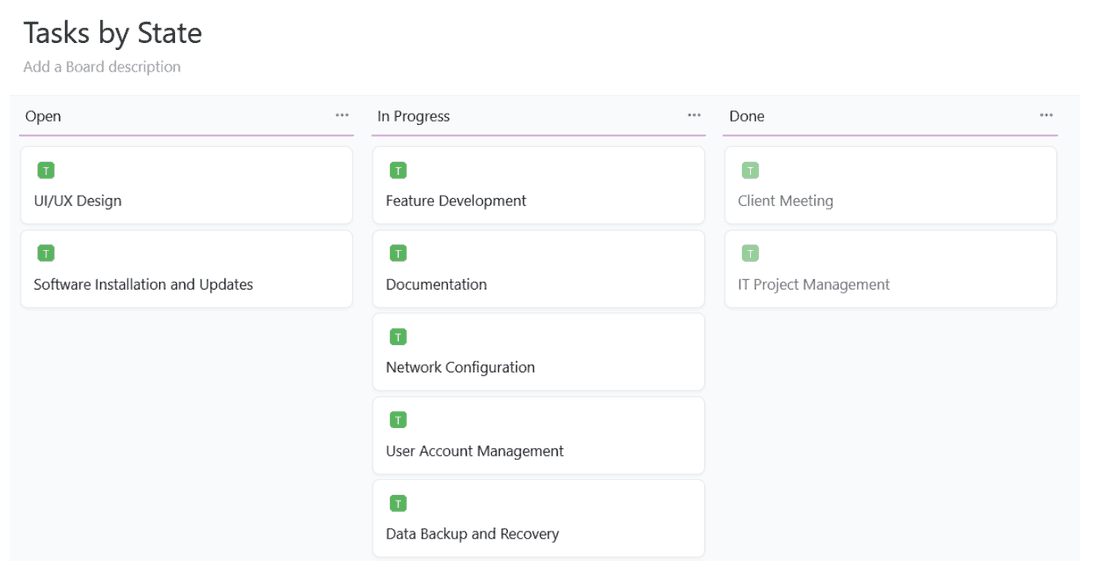
2. Define Your Criteria: Establishing clear criteria is paramount. What are your business goals, market trends, customer needs, and resource availability? These criteria are the foundation upon which you’ll rebuild your portfolio.
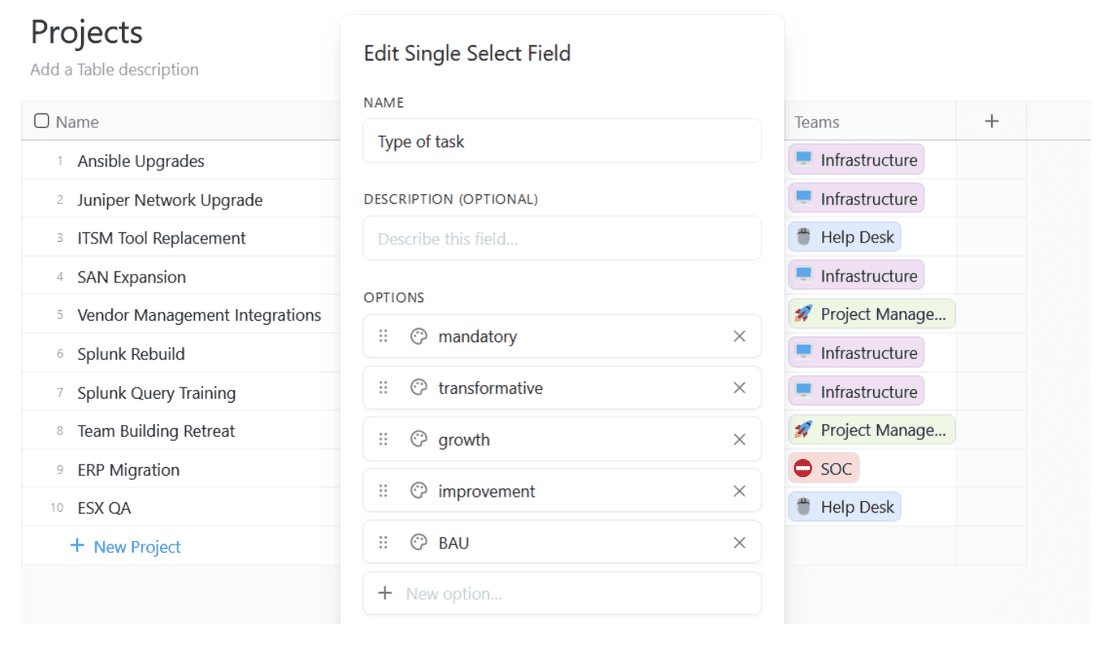
3. Gather and Evaluate Data: Using Fibery, accumulate data on each project or product, including financial projections, market analysis, resource requirements, and risk assessments. Evaluate and score each project based on your criteria, focusing on value to the business.
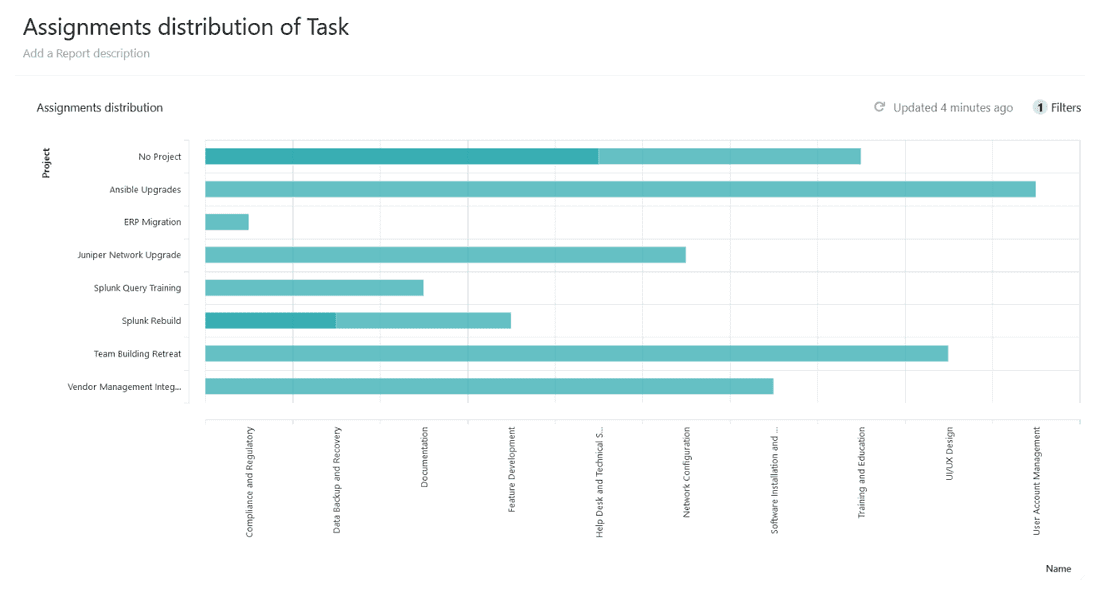
4. Categorization and Scoring: Organize projects into categories like mandatory, high-value, transformative, growth, and improvement initiatives. Assign value and scores to each, removing any that no longer align with your strategic objectives.
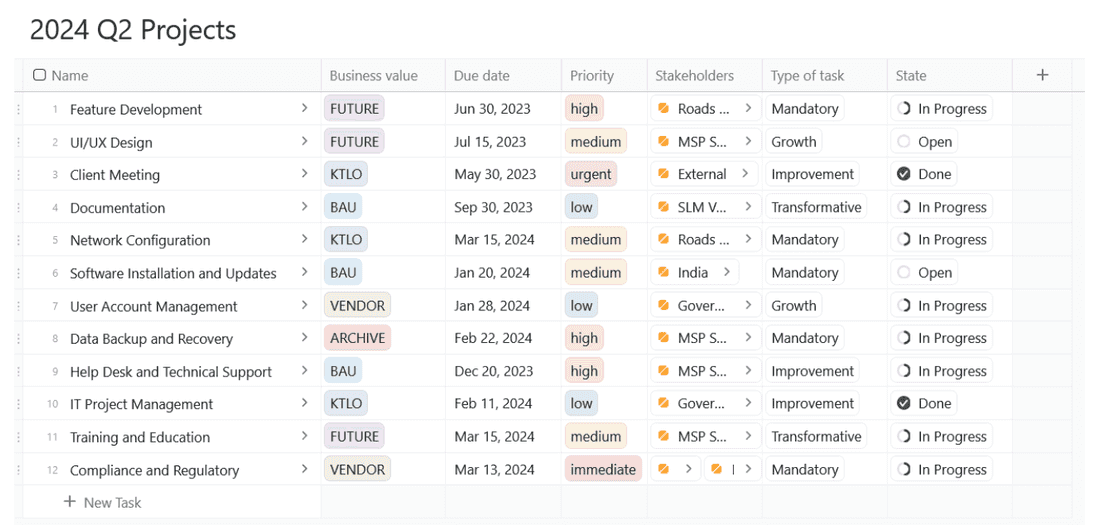
5. Rank and Prioritize: With the help of visualization tools like Fibery, rank these projects. Prioritize them based on their scores and categories, focusing on what brings the most value to both the business and the customer.
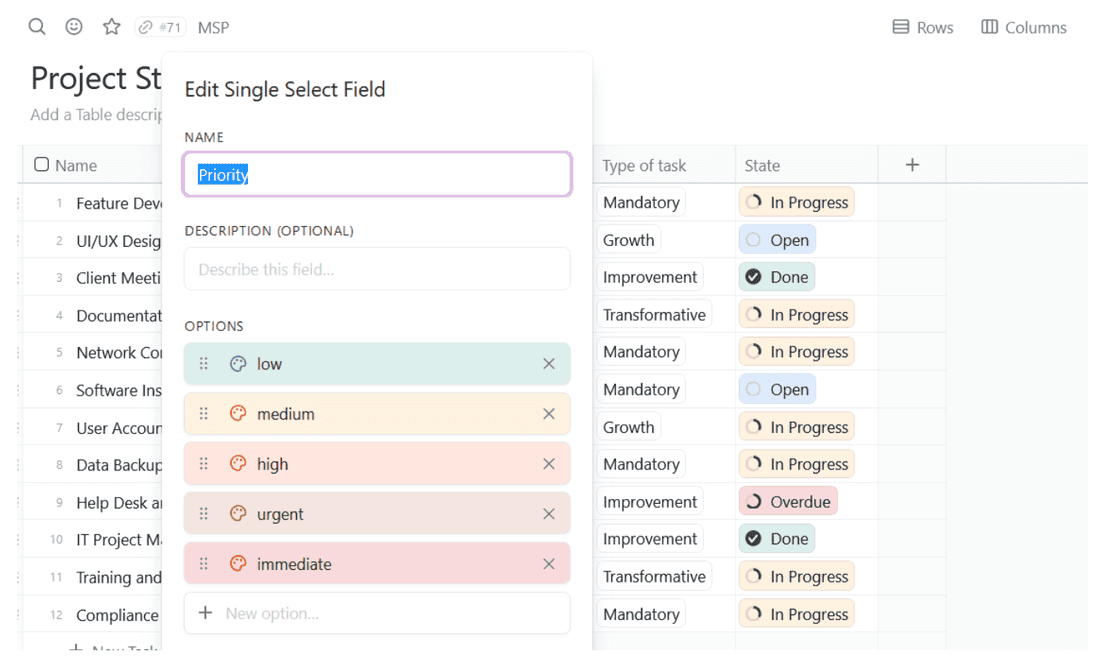
6. Communicate and Align: Ensure everyone in your team is on the same page. Agree on a prioritization approach and communicate this clearly. Tools like Fibery are instrumental in maintaining transparency and alignment across the team.

7. Review and Adjust: The market is dynamic, so your portfolio should be too. Regularly review and adjust your priorities, using Fibery to track changes and impacts.
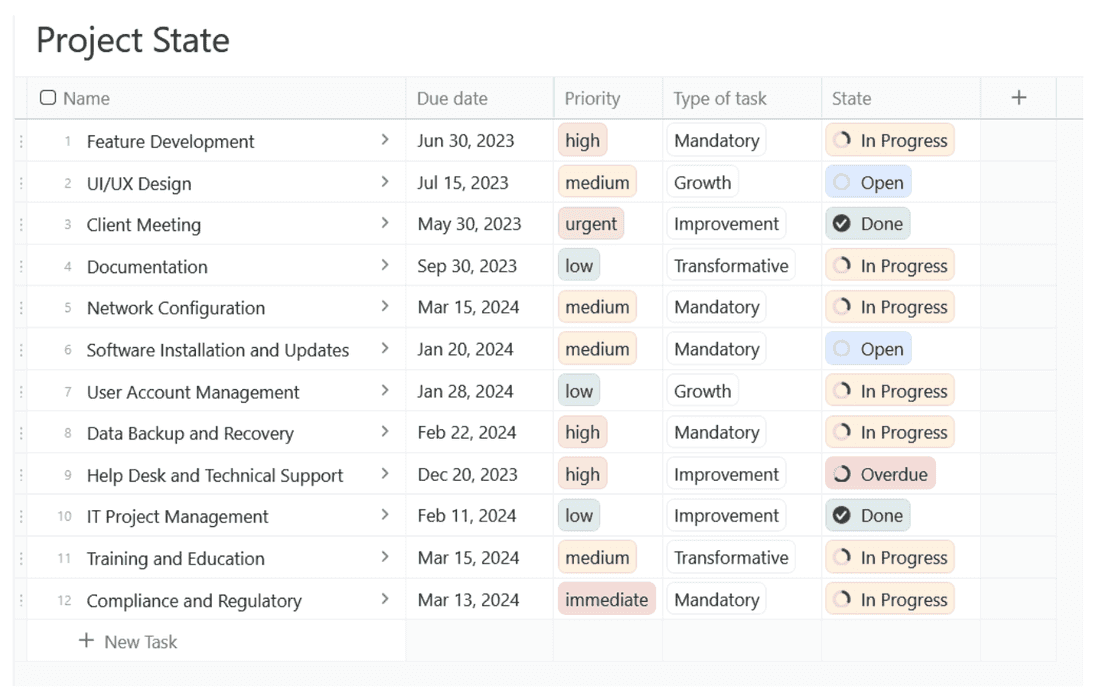
8. Manage and Execute: With your portfolio prioritized and your team aligned, it’s time to manage and execute. Use a tool like Fibery to keep track of progress, ensuring that your portfolio reflects the strategic direction of your business.
Remember, portfolio prioritization is more than just a task; it’s a strategic approach to managing your product department.
Using a tool like Fibery not only simplifies the process but also ensures that your decisions are data-driven and strategically sound.
What if You Fail to Prioritize Your Portfolio?
Neglecting portfolio prioritization can become a strategic misstep with tangible consequences. Without a clear prioritization strategy, product managers risk several pitfalls:
- Resource Misallocation: In the absence of prioritized goals, resources might get funneled into projects with minimal impact, leading to an inefficient allocation of time, budget, and manpower. This misdirection can leave projects with high potential and strategic importance lacking the necessary resources to succeed.
- Missed Market Opportunities: The market waits for no one. Failing to prioritize means slower response times to market trends and customer needs. This lag can result in missed opportunities to innovate or capture market share, putting the company at a competitive disadvantage.
- Internal Confusion and Reduced Productivity: Without clear direction, team members may find themselves pulled in different directions. This lack of clarity can lead to duplication of efforts, conflicts over resource allocation, and ultimately, a decline in overall productivity.
- Inability to Adapt to Change: A rigid, un-prioritized portfolio can hinder a company’s ability to adapt to changing market conditions. In today’s business environment, agility and responsiveness are key, and a well-prioritized portfolio is essential for quick pivoting.
The PM’s Hot Take
I’ve seen brilliant products wither due to poor prioritization. It’s like watching a gourmet meal go cold because you can’t decide which dish to eat first. Portfolio prioritization isn’t just a part of the job; it’s actually central to it.
Mastering Portfolio Prioritization with Fibery
As we’ve learned, portfolio prioritization in product management is more than just organizing tasks. It’s about making strategic decisions that align with business goals and customer needs.
In this article, we outlined the critical steps for effective portfolio management, from identifying key project components to adapting to ever-changing market demands.
The right tools make all the difference in executing these strategies efficiently.
Fibery offers a suite of solutions specifically designed for product managers, enabling seamless project visualization, data gathering, and team alignment.
For more insights and practical techniques to enhance your product management skills, visit our blog.
Discover how Fibery can transform your approach to product management, making it not just manageable but masterful.
Psst... Wanna try Fibery? 👀
Infinitely flexible product discovery & development platform.